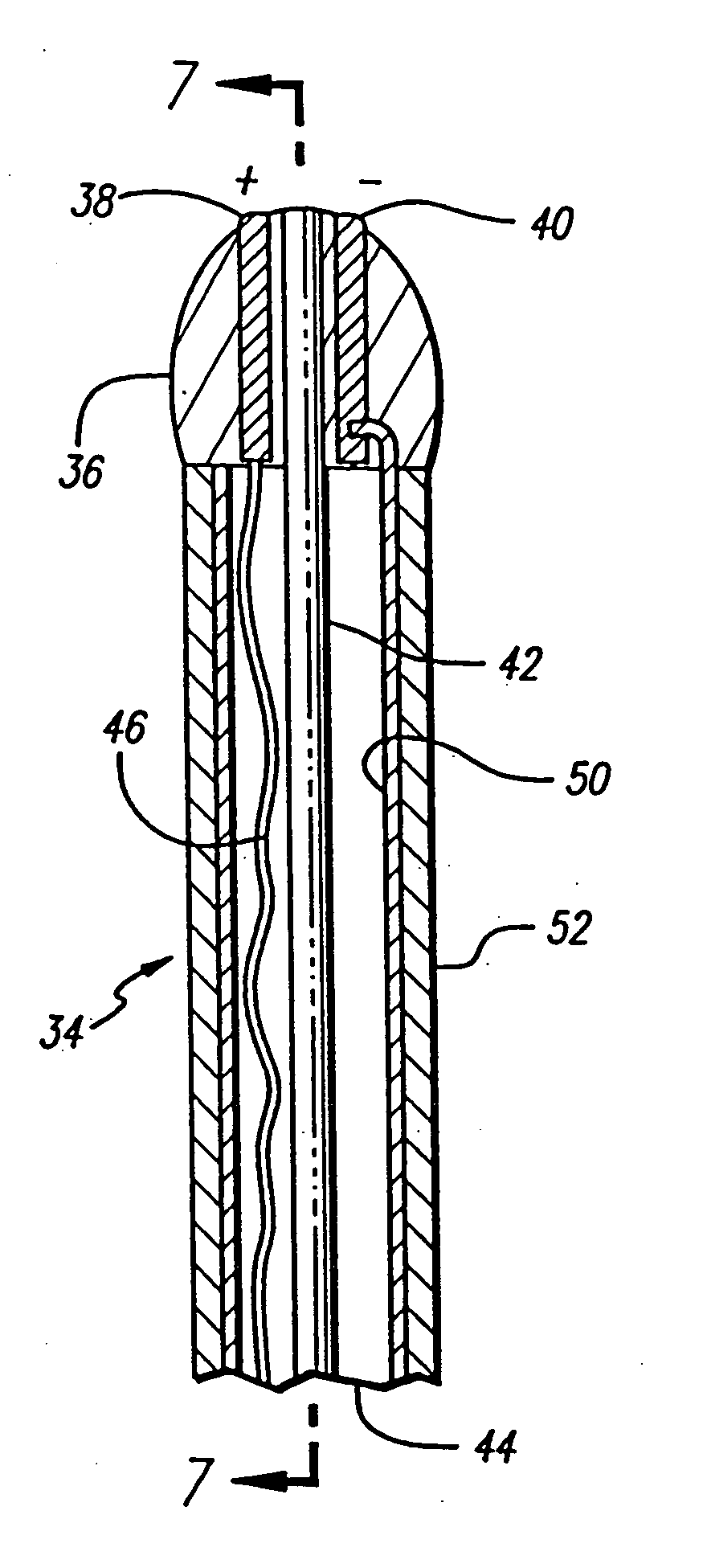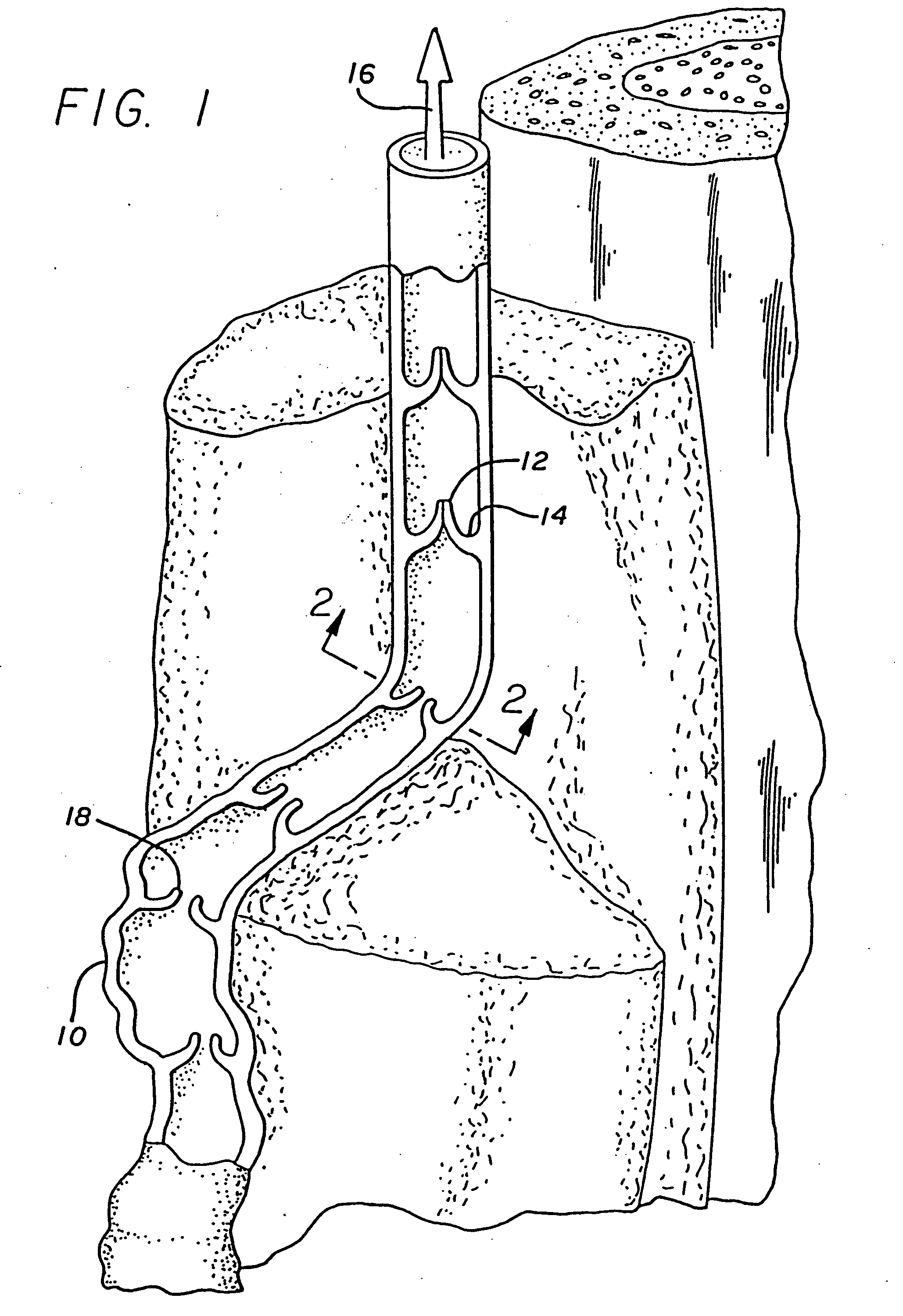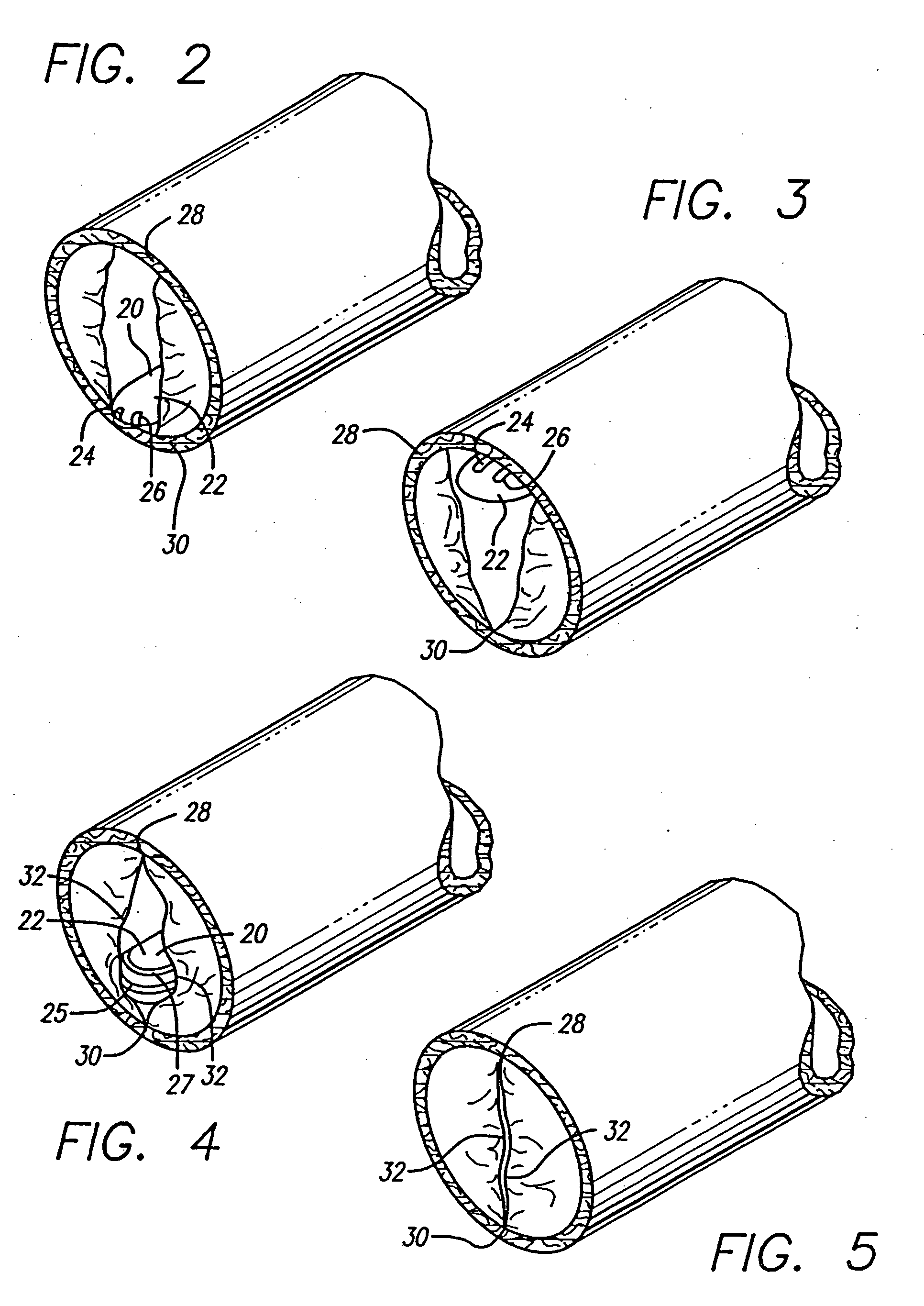Method for treating venous insufficiency using directionally applied energy
a direction applied energy and venous insufficiency technology, applied in the field of minimally invasive procedures and equipment using a catheter-based system, can solve the problems of inability to close the valve, incompetence of the valvular cavity, vein dilation, etc., and achieve the effect of restoring valvular competen
- Summary
- Abstract
- Description
- Claims
- Application Information
AI Technical Summary
Benefits of technology
Problems solved by technology
Method used
Image
Examples
Embodiment Construction
[0045] Turning now to the drawings with more particularity, the invention is embodied in a system and method for the intravenous treatment of veins using a catheter to deliver an energy-application element, such as a pair of electrodes, to a venous treatment site. Although described as applying RF energy from the electrode, it is to be understood that other forms of energy such as microwaves, ultrasound, direct current, circulating heated fluid, optical energy, radiant light, and LASERs may be used, and that the thermal energy generated from a resistive coil or curie point element may be used as well. As used herein, like reference numerals will designate corresponding or similar elements in the various embodiments of the present invention to be discussed. In addition, unless otherwise noted, the term “working end” will refer to the direction toward the treatment site in the patient, and the term “connecting” end will refer to the direction away from the treatment site in the patien...
PUM
| Property | Measurement | Unit |
|---|---|---|
| frequency | aaaaa | aaaaa |
| frequency | aaaaa | aaaaa |
| diameter | aaaaa | aaaaa |
Abstract
Description
Claims
Application Information
 Login to View More
Login to View More - R&D
- Intellectual Property
- Life Sciences
- Materials
- Tech Scout
- Unparalleled Data Quality
- Higher Quality Content
- 60% Fewer Hallucinations
Browse by: Latest US Patents, China's latest patents, Technical Efficacy Thesaurus, Application Domain, Technology Topic, Popular Technical Reports.
© 2025 PatSnap. All rights reserved.Legal|Privacy policy|Modern Slavery Act Transparency Statement|Sitemap|About US| Contact US: help@patsnap.com



